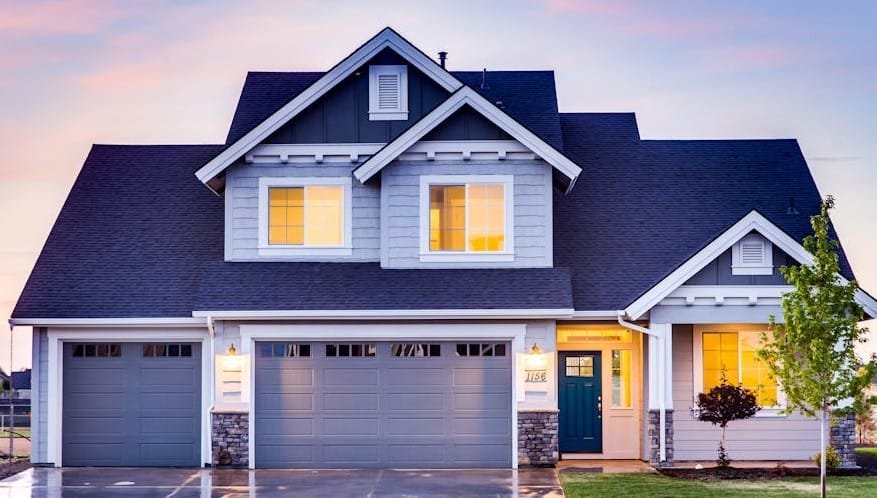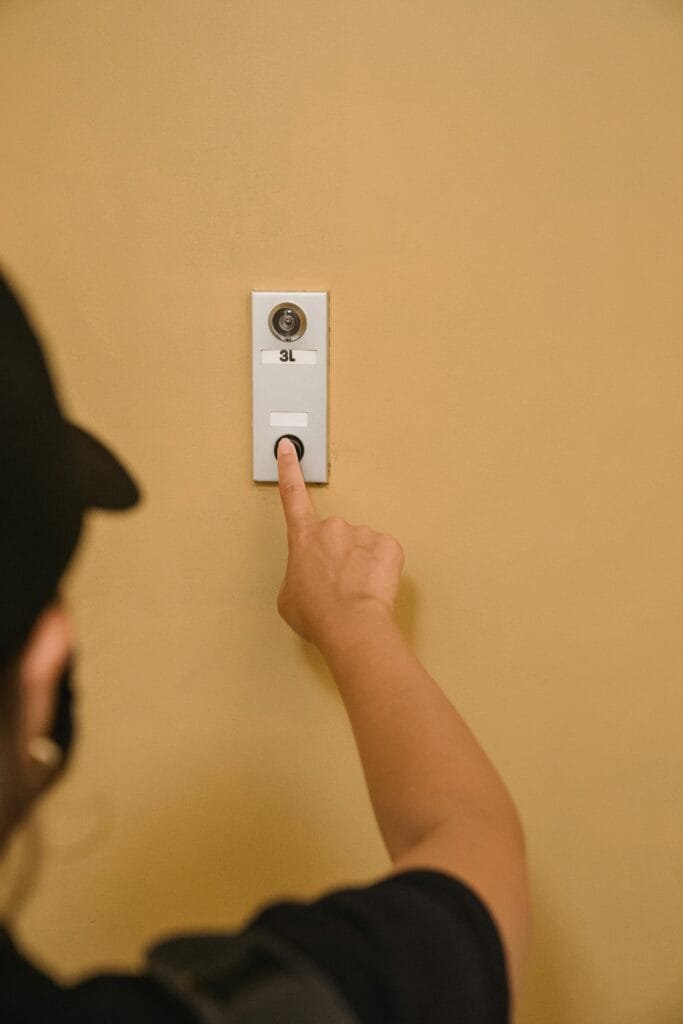
Introduction to Home Defense
In an era where home security has become increasingly paramount, understanding the significance of home defence is vital for every homeowner.
Recent statistics reveal a worrying trend in burglary rates, highlighting an urgent need for effective strategies to safeguard one’s dwelling.
As the threat of burglary looms larger, many individuals experience heightened anxiety, leading to a psychological impact that permeates daily life.



Homeowners often find themselves contemplating the potential loss of valuables and the violation of personal space when they consider the realities of property crime.
The necessity of implementing home defence UK strategies cannot be overstated. The first line of defence against intruders is a well-thought-out security plan that encompasses both physical and psychological aspects.
A secure home not only protects belongings but also provides a sense of peace and security that is essential for well-being.
Various factors contribute to the rise in concern regarding home safety, including advancements in burglary techniques and a growing awareness of neighbourhood crime rates. These shifts underline the importance of being proactive rather than reactive in establishing safety measures.
Moreover, the role of community engagement in enhancing home defence strategies is noteworthy. Residents can work together to create a supportive environment by sharing information about local crime trends and resources for improving security.
This collaboration can significantly reduce the incidence of theft and enhance feelings of safety among residents. In the following sections, we will explore various home defence techniques, including technology-driven solutions and physical security measures, empowering homeowners to take control of their safety and reinforce the sanctity of their living spaces.
Understanding Burglary Methods
Burglars employ a variety of methods to gain access to homes, and understanding these techniques can help homeowners implement effective home defence UK strategies. One of the most common methods used by burglars is “breaking and entering,” which typically involves forced entry through doors or windows.
Statistics reveal that around 60% of burglaries occur through unlocked doors or windows, emphasizing the importance of securing all entry points, even when at home.
Another common technique known as “social engineering” involves tricking homeowners into revealing access information. Burglars may pose as maintenance workers, delivery personnel, or even neighbours to gain the trust of their potential victims.
This highlights the necessity for homeowners to remain vigilant and verify anyone who requests access to their property, thereby strengthening their home defence.
According to recent data, certain types of properties are more attractive to criminals, impacting the overall vulnerability of a neighbourhood.
Homes that are isolated, have poor lighting or lack proper surveillance are particularly appealing targets. Criminals tend to prefer homes that suggest easy access or limited defensive measures, leading to a higher likelihood of break-ins.
In addition, statistics indicate that homes with visible security systems effectively deter potential burglars, as they prefer targets with minimal risk of being caught.
In examining different burglary tactics, it is essential for homeowners to assess their own property for potential vulnerabilities.
Simple measures, such as installing deadbolts, reinforcing door frames, and utilizing motion-sensor lighting, can greatly enhance home defence.
By understanding how burglars operate and recognizing the characteristics of their vulnerabilities, homeowners can adopt comprehensive strategies to protect their homes from unwanted intrusions.
Securing Entry Points: Doors and Windows
Securing entry points, specifically doors and windows, is fundamental to an effective home defence strategy.
These are often the most common access points for burglars and unwanted guests, making their reinforcement crucial in safeguarding your property.
A multi-layered approach, incorporating high-quality locks, deadbolts, security screens, and window bars, can significantly enhance the security of these entryways.
To begin with, selecting high-quality locks is essential. Standard door locks are often vulnerable to picking and bumping. Instead, consider installing deadbolts, which provide a far more reliable defence against forced entry.
A single-cylinder deadbolt offers good security; however, a double-cylinder deadbolt can add an extra layer of protection by requiring a key for access from both sides, particularly beneficial for doors with glass panels nearby.
In addition to robust locking mechanisms, security screens can prevent unauthorized access while allowing for ventilation and light.
These screens should be made from hardened materials that resist cutting and impact. They are especially effective when installed on sliding glass doors or windows, which are often targeted by intruders.
Window bars represent another significant measure in home defence. While some homeowners may fear they could detract from the aesthetic appeal of their homes, modern designs can be both functional and visually appealing.
Installing these bars on accessible windows, particularly in ground-floor units, creates a formidable barrier against break-ins. Be sure to choose removable options that allow for egress in case of an emergency.
In conclusion, reinforcing doors and windows is an indispensable aspect of home defence.
Implementing high-security locks, deadbolts, security screens, and window bars will substantially minimize the risk of burglary.
By investing in these measures, homeowners can gain peace of mind and ensure the safety of their property and loved ones.
Investing in Security Systems
Securing one’s home is a priority for many individuals looking to safeguard their property and loved ones. One of the most effective ways to enhance home defence is by investing in security systems.
There is a wide variety of systems available on the market, each with unique features and benefits that cater to different needs and preferences.
Alarm systems are one of the most commonly sought-after security solutions. These systems can be set up to immediately alert homeowners to potential threats, such as unauthorized entry.
They typically come with sirens that sound when a breach occurs, deterring burglars from continuing their attempts.
Modern alarm systems often include smartphone integration, allowing owners to monitor their homes remotely.
Motion detectors provide an extra layer of protection by sensing movement in designated areas around the property.
These devices can trigger alarms or activate lights, thereby alerting homeowners and dissuading intruders. Installing motion sensors at entry points or around yard perimeters creates a proactive home defence mechanism.
Surveillance cameras have evolved significantly, now offering high-definition video feeds that can be accessed in real-time.
They help homeowners monitor various areas of their property and can provide crucial evidence if a crime occurs. With options for indoor and outdoor placements, these cameras are indispensable for those seeking comprehensive security.
When choosing a security system, individuals should consider their specific needs, budget, and lifestyle. There are monitoring systems, which require a subscription to a professional monitoring service, and unmonitored systems, which can be more cost-effective but rely on homeowners to respond to alerts.
Understanding the pros and cons of each type is essential for making an informed decision regarding home defence.
Utilizing Outdoor Security Measures
Effective Home Defence UK begins with a strong emphasis on outdoor security measures that serve to deter potential intruders. By enhancing the exterior of your property, you create an environment that discourages unauthorized access.
Proper outdoor lighting is pivotal in this regard. By illuminating dark areas surrounding your home, you not only increase visibility but also minimize the chance of a burglar successfully executing their plan unseen. Motion-sensor lights can be particularly effective, as they automatically activate when movement is detected, surprising intruders and drawing attention to their presence.
Landscaping strategies also play a crucial role in improving home defence. Maintaining a tidy lawn and trimming shrubs and trees can eliminate potential hiding spots for burglars.
Ideally, plants should be kept below window height to ensure that any potential intruder would be easily visible to neighbours or passersby. Implementing thorny bushes near windows and entry points can further deter entry attempts, as these physical barriers can be both a visual and physical deterrent.
Additionally, the presence of security signs and decals can reinforce a homeowner’s peace of mind and act as a deterrent. Even if you do not have a security system, displaying signs indicating that your home is monitored can lead potential intruders to think twice before attempting to breach your property.
The combination of these outdoor security measures—effective lighting, thoughtful landscaping, and visible security indicators—enhances your home defence and contributes to a safer environment overall.
Building a Neighborhood Watch
Establishing a neighbourhood watch is an essential strategy for enhancing home defence and creating a safer environment for all residents. This grassroots initiative encourages neighbours to come together, share information, and monitor each other’s properties, ultimately deterring potential burglars and unwanted guests.
A well-organized neighbourhood watch can significantly contribute to the overall security of the area, creating a sense of community ownership over local safety.
The first step in building a neighbourhood watch involves gathering interested residents to discuss concerns related to home defence.
This initial meeting should focus on identifying the specific security issues faced by the community, such as theft, vandalism, or suspicious activities.
It’s important to communicate openly and establish trust among participants. Once you have a group of engaged neighbours, it is beneficial to form a steering committee to help organize the watch, plan regular meetings, and develop strategies for effective communication.
Effective communication is key to the success of a neighbourhood watch program. Neighbours must keep each other informed about any suspicious activities they observe.
Utilizing digital platforms, such as social media groups or community apps, can facilitate real-time sharing of information, enabling quicker response times.
Regular meetings, whether in-person or virtual, help reinforce relationships among participants and keep security concerns at the forefront of community discussions.
Shared vigilance among neighbours acts as a powerful deterrent against potential intruders. By actively watching each other’s homes, residents cultivate an environment where suspicious behaviour is promptly reported to authorities.
This can significantly reduce the risk of becoming a target for home invasions. As a collective effort, a neighbourhood watch not only improves home defence but fosters a strong sense of community belonging, thereby enhancing the overall quality of life for all residents.
Creating a Safe Interior Environment
Ensuring the safety of your home begins with creating a secure interior environment. One of the fundamental strategies is to organize valuables effectively. By storing valuable items out of sight in secured locations, such as locked drawers, you reduce the temptation for potential intruders.
It is advisable to catalogue significant possessions and photograph them, not only for insurance purposes but also to aid in recovery should a burglary occur.
Furthermore, having a comprehensive emergency plan is essential. Each member of the household should be aware of this plan, which should include escape routes and designated meeting points outside the home.
Regularly practising this plan increases familiarity and preparedness in the event of an emergency, whether it be a home invasion or another unforeseen circumstance. Involving everyone in the creation of this plan fosters a sense of responsibility and awareness, contributing to collective home defence.
The concept of a safe room also warrants consideration in enhancing your home’s interior security. A designated safe room should be a fortified space within the house that can be secured from the inside.
This room should contain essential supplies, such as a phone, food, and water, to sustain occupants until assistance arrives. Planning this space and ensuring it remains functional can make a significant difference in home defence scenarios.
Lastly, mindful practices play a vital role in maintaining a safe environment. Simple actions, such as locking doors and windows even when at home, can act as strong deterrents against unauthorized access. Leveraging technology, security apps that allow for remote monitoring and alerts can provide an additional layer of protection.
Being proactive about these practices not only increases your home’s security but also promotes peace of mind among residents.
Emergency Preparedness and Response
In today’s world, the significance of emergency preparedness cannot be overstated, particularly in relation to home defence UK. Homeowners are encouraged to devise a comprehensive emergency response plan that equips them to tackle the possibility of intrusions and other security breaches.
An effective plan starts with recognizing the potential threats that may arise and assessing the unique vulnerabilities of one’s residence.
Establishing a clear response plan is paramount. This should include designated safe rooms where family members can retreat during a break-in and an escape route that allows for a swift exit if necessary. It is crucial to practice this plan regularly so that all family members know their roles and responsibilities.
Additionally, consider how your home defence mechanisms, such as security cameras and alarm systems, can be integrated into your response plan. These tools not only deter intruders but also help document incidents and provide invaluable information to law enforcement.
Moreover, keeping a list of emergency contacts readily accessible is essential. This should include local law enforcement, a trusted neighbour, and emergency services.
Having these contacts in place can streamline communication and response times in case of a break-in. Homeowners should also consider investing in a mobile app or a digital service that allows for quick notification to multiple contacts simultaneously during a crisis.
In terms of immediate actions during a security breach, emphasize the importance of staying calm and prioritizing safety over confrontation.
If possible, discreetly alert authorities and take shelter in a secure area of the home. Taking proactive steps to prepare for emergencies and maintaining an informed demeanour during a crisis can make a significant difference in safeguarding both individuals and property.
Overall, a structured and practised emergency response plan is a critical component of an effective home defence strategy, promoting safety and awareness in precarious situations.
Conclusion
In the ever-evolving landscape of home security, adopting a proactive approach to home defence UK is of paramount importance.
The measures discussed throughout this blog post highlight that a well-rounded strategy significantly enhances the protection of your home against potential intruders.
Key strategies such as enhancing physical barriers, employing advanced surveillance systems, and developing a community watch system are essential components of a comprehensive home defence plan.
Homeowners are encouraged to regularly assess their existing security measures, ensuring they are updated to cope with new and emerging threats.
This includes revisiting locks, installing motion-sensor lights, and considering alarm systems that can alert you and the authorities in case of a breach. Technology plays an increasingly pivotal role in home defence; hence, integrating smart home devices can provide additional layers of security that adapt to your lifestyle and preferences.
Moreover, maintaining a heightened awareness of potential threats in your neighbourhood is crucial. Engaging with local community initiatives that promote safety can enhance collective vigilance, making it more difficult for criminals to operate unnoticed.
As security threats evolve, so too should your home defence strategies. A flexible mindset that embraces change and fosters continuous improvement will fortify your home’s defences over time, ensuring that you are equipped to confront both current and future challenges.
Ultimately, a commitment to refining your home defence is an ongoing process, and it requires diligence and adaptability. By prioritizing security and being proactive in your approach, you can significantly reduce the risk of intrusion and protect your home and loved ones from unwanted guests.
Reference